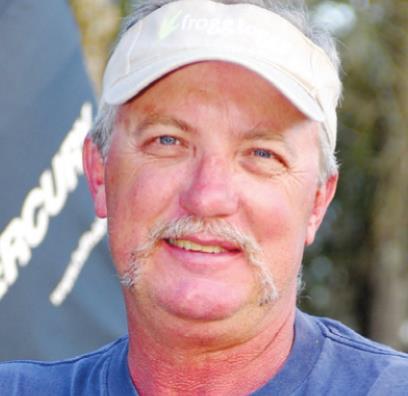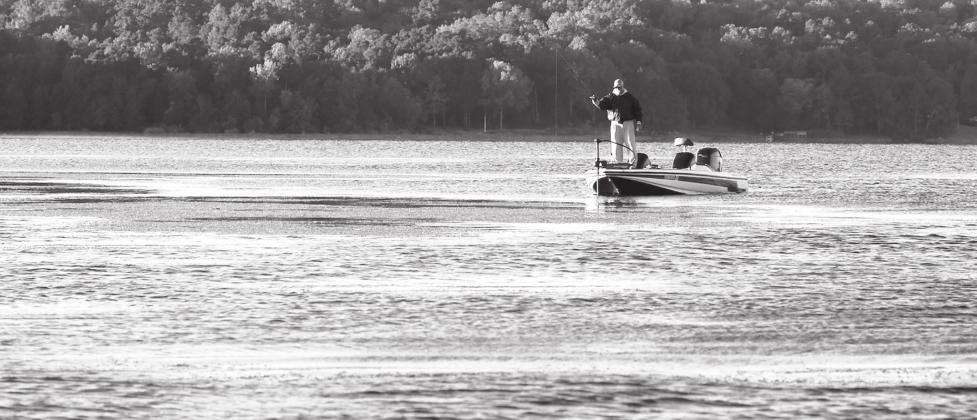Texas Parks and Wildlife Department fisheries scientists recently launched a pilot study at Toledo Bend Reservoir aimed finding an explanation as to why hydrilla and other types of aquatic vegetation have not rebounded after vanishing from the Texas/Louisiana border lake roughly six years ago.
Toledo Bend is a massive reservoir spanning 185,000 surface acres. Built on the Sabine River in 1967, it’s the biggest in the South and the fifth largest in the United States.
The bass fishing there has a rich history that has earned the reservoir national recognition. Bassmaster Magazine ranked the fishery as the best in America for two consecutive years in 2015 and 2016.
The tall ratings came on the heels stellar tournament results and a record run on double-digit bass recorded by a popular lunker bass program run by the Toledo Bend Lake Association.
The lunker program awards free replicas to anglers who enter big bass weighing 10 pounds or more and release the fish back into the lake. Between May 2015 and May 2016, the program received 139 entries — an all-time high dating back to 1992. By contrast, the program awarded 25 replicas during the same time period in 2020-21.
Clearly, the quality of fishing on the lake has taken a dive. Likewise, most experts will agree that a lack of habitat created by hydrilla and aquatic plants is a big part of the reason why. Increased fishing pressure spurred by the flurry of national recognition also could be partly to blame.
THE LOVE OF GRASS
Hydrilla is a mainstay for bass and forage species. Kept in check, it provides some of the very best bass habitat around and has a history of helping maintain high quality fisheries as lakes age. It also helps position the fish so they are easier for anglers to catch.
Hydrilla was first discovered at Toledo Bend in the mid-1970s. It was once plentiful at depths beyond 20 feet.
It is common for coverage areas of hydrilla to cycle up and down due to fluctuations in water level, poor water clarity and cold weather. The plant generally rebounds pretty quick when it does get “knocked back” for one reason or another.
The ebb/flow cycle has occurred many times over the years at Texas lakes like Toledo Bend, Sam Rayburn, Nacogdoches, Choke Canyon, Amistad, Coleto Creek and Fork. For some reason, however, the grass has not bounced back at Toledo Bend since fading away around 2015. Anglers have witnessed a similar disappearing at at Lake Fork.
Fall aerial surveys performed in 2014 at Toledo Bend estimated there were nearly 14,000 acres of hydrilla in the lake. In 2019, the surveys showed there was virtually none. American lotus (lily pads) declined from about 3,000 surface acres to 70 acres during the same time period.
Likewise, fisheries scientists are rolling up their sleeves to look for answers why.
STEPS OF THE STUDY
TPWD fisheries biologist Todd Driscoll of Brookeland said the department recently erected a series of 5X5 cages in the Hausen Bay and Six Mile Creek areas on Texas side of Toledo Bend. Initially, the cages will remain empty to determine if any plants reestablish inside between now and next spring.
If not, the department plans to transplant native species inside the cages and monitor the growth. Driscoll said the study will be built around native plants like American lotus, white/yellow water lilies and American pond weed.
Numerous native plants were harvested from B.A. Steinhagen Reservoir near Jasper earlier this month. The plants are being held in TPWD green houses at the John D. Parker East Texas State Fish Hatchery.
Biologists have already seen significant propagation in a short period of time using seeds from the lotus plants, according to John Findeisen, head of TPWD’s aquatic vegetation management team.
Driscoll says TPWD fisheries managers would love to see hydrilla reestablished in Toledo Bend, because of the premium habitat it provides. However, the plant cannot be used in the study because it is currently classified as a “prohibitive exotic species.” It is illegal to transport hydrilla or to introduce it in waterways throughout the state.
According to Findeisen, hydrilla plants often originate from potato-like tubers at the end of under ground stems. The plant also can propagate from turions (buds) that form where the plant branches and through fragmentation. Studies have shown that hydrilla tubers can remain viable in the soil for many years.
Findeisen said another important facet of the ongoing study will involve sampling the substrate at various depths of water to determine whether or not there are any tubers or turions present.
“It’s going to be a learning process for us,” Findeisen said. “This is something we’ve never done before. There is a lot of research to be done and questions to be answered. If we find the tubers, we’ll see if we can get them to propagate in a greenhouse setting. That will help us determine whether or not there might be something in the soil at Toledo Bend that is causing them not to reproduce.”
Findeisen added that he does not believe there is a connection between the widespread disappearance of hydrilla on Toledo Bend and herbicide applications performed by TPWD-hired contractors in 2016- 17. The biologist said the contractors were hired to apply herbicide to shallow water areas infested with Giant salvinia, a free-floating aquatic plant that ranks among the most noxious aquatic invasive plants currently threatening Texas waters. It is believed that overspray from those applications killed significant amounts of torpedo grass (hay grass) and other desirable aquatic plants that were mixed with Giant salvinia up and down the lake.
As earlier mentioned, the Toledo Bend study is just now in its infancy stages. According to TPWD fisheries biologist Jake Norman of Tyler, a similar study may be coming down the pike at Lake Fork.
“It will depend on what they find out at Toledo Bend,” Norman said.
Matt Williams is a freelance writer based in Nacogdoches. He can be reached by e-mail, mattwillwrite4u@yahoo.com.




